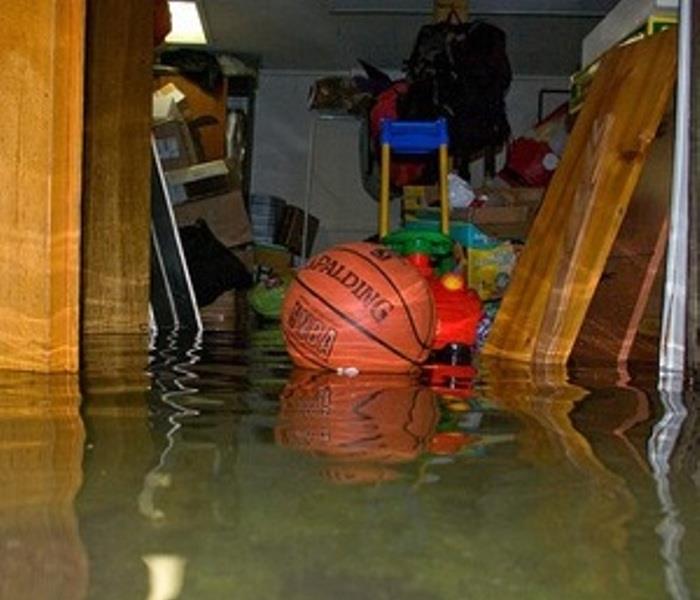The Basics of Water Damage Restoration
11/1/2019 (Permalink)
Water damage restoration training is one of the important skill sets that a team of professional cleaners need in order to offer comprehensive services. This is a service that involves going into a home or business after a wet disaster, such as flood, burst pipes, or snow destruction, and not just cleaning up the mess, but actually drying and repairing the substructures that high volumes of moisture will affect, such as plaster and drywall, wood, concrete, and metal. Mold is a concern, of course, but there can be many other problems related to moisture damage; crumbling drywall and plaster, weakening beams and supports, rusting metal surfaces, and more. If the moisture is left to sit long enough, it will eventually bring the house to ruin. By having professional water damage restoration training, a cleaning crew will be able to properly assess the situation and devise the best plan for repair.
According the IICRC (Institute of Inspection Cleaning and Restoration Certification), which sets the standards for the cleaning industry and water damage restoration training; there are several different levels and classes involved in liquid destruction. From the IICRC’s S-500 standards, there are three categories describing the type of liquid involved.
• Category 1. This is liquid from a clean and sanitary source, such as faucets, toilet tanks, drinking fountains, etc. But, category one can quickly degrade into category two.
• Category 2. This category of liquid used to be called grey water, and is described as having a level of contaminates that may cause illness or discomfort if ingested. Sources include dishwasher or washing machine overflows, flush from sink drains, and toilet overflow with some urine but not feces.
• Category 3. This is the worst classification and is grossly unsanitary. It could cause severe illness or death if ingested. It used to be called black water, and sources include sewer backup, flooding from rivers or streams, toilet overflow with feces, and stagnant liquid that has begun to support bacterial growth.
Next are the classes of destruction.
• Class 1. The lowest and easiest to deal with, this has a slow evaporation rate. Only part of a room or area was affected, there is little or no wet carpet, and the moisture has only affected materials with a low-permeance rate, such as plywood or concrete.
• Class 2. With a fast evaporation rate, this level affects an entire room, carpeting, or cushioning, the wetness has wicked up the walls at least 12”, and there is moisture remaining in structural materials.
• Class 3. This class has the fastest evaporation rate, and ceilings, walls, insulation, carpet and sub-floors are all saturated. The liquid may have come from overhead.
• Class 4. This class is labeled as specialty drying situations, which means there has been enough liquid and time to saturate materials with very low permeance, such as hardwood, brick, or stone.
The education involved in water damage restoration training teaches the technician to tell the difference between all the classes and categories and form a restoration plan based on those factors. Whether the work is done with a professional, broad-spectrum cleaning company, or if it’s a company limited strictly to moisture damage work, it’s important to make sure the technician has the right knowledge and tools for the job. Infrared probes are used to tell the extent of the destruction, as well as air movers, air scrubbers, different sizes and types of dryers and blowers, special hardwood dryers, and dryers designed specifically for drying the sub-floor and inner wall cavities. Armed with water damage restoration training and the proper tools, most situations are salvageable.
Our team members are Water Damage Restoration certified by the IICRC. If you suffer water damage SERVPRO is only a phone call away. 24 hours a day 7 days a week! 812-574-5744
SOURCE: http://www.IICRC.org/the-basics-water-damage-restoration-training-a-23.html



 24/7 Emergency Service
24/7 Emergency Service
